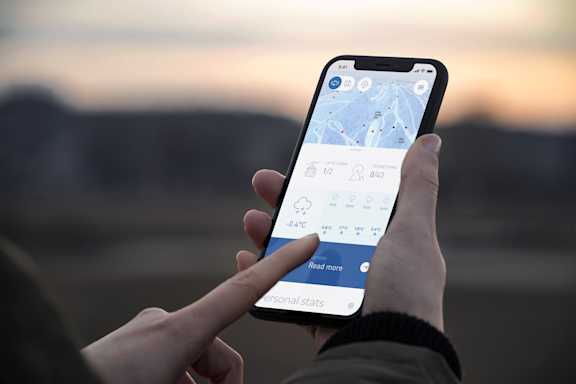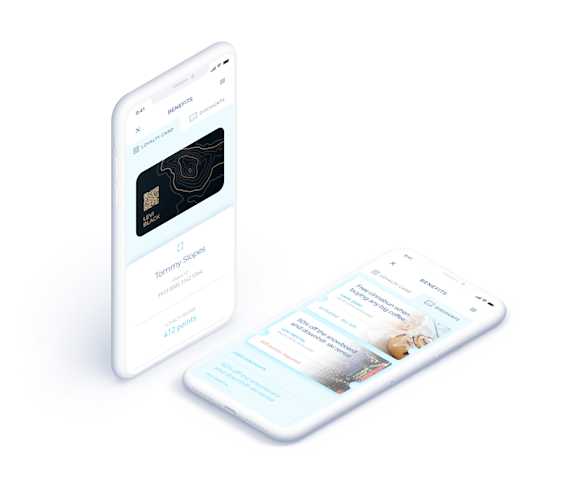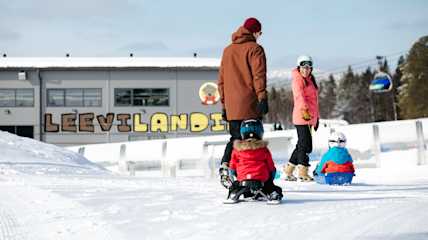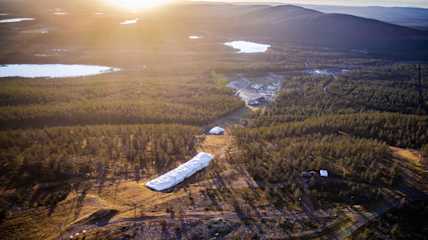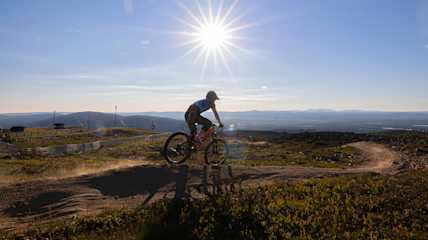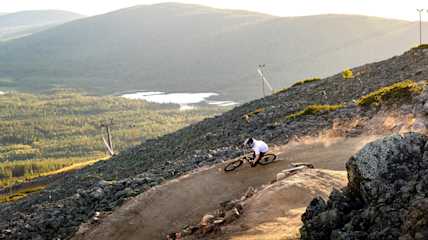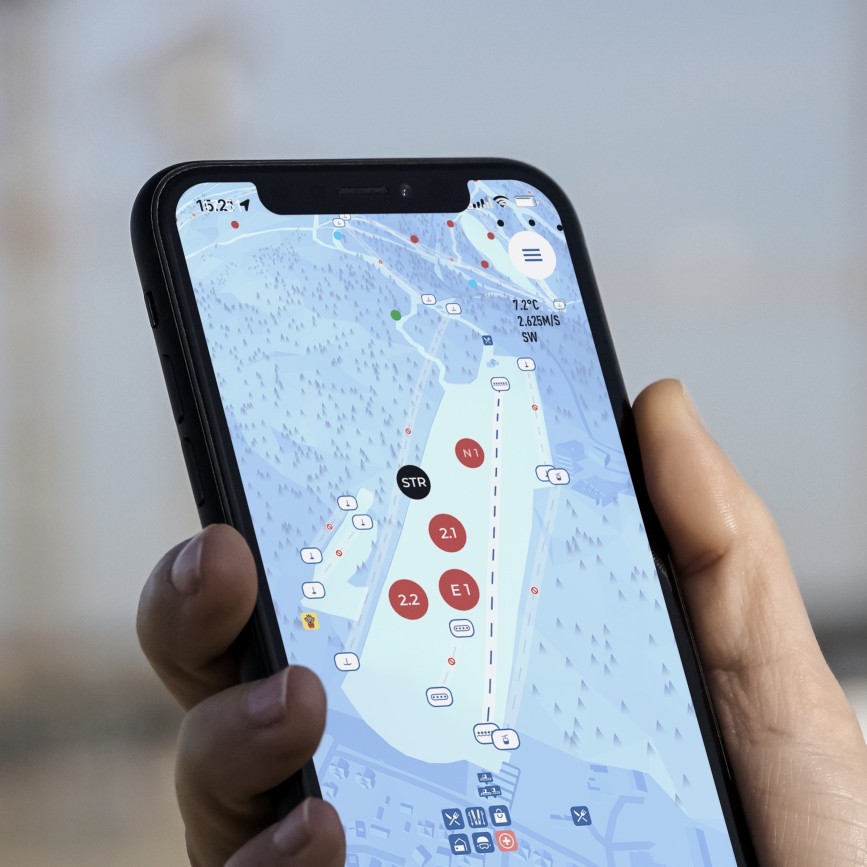
Levi Ski Resort's digital ecosystem enables an even better customer experience
In recent years, Levi Ski Resort has invested significantly in developing the customer experience. Digitalization plays a key role in that. All information from snow cannons to cash registers and ticket sales systems is combined in a visually stunning mobile application, which was built using the versatile expertise of tech company HiQ and the Frends integration platform.
Levi's mobile application is every visitor's companion app for all seasons. The application has, among other things, an interactive 3D map of the area, and up-to-date information about the resort. In addition to comprehensive slope services, Levi Ski Resort's loyalty program has been introduced into the application. When making the application, the goal was to create a companion application based on the data sources that already existed. The aim was to bring as much added value as possible to the customers.
"Levi Ski Resort's mobile application was a very timely and demanding enough project for us. The client had a clear desire to raise the value of the existing pieces to a new level and at the same time create something revolutionary, even completely unique. This open-minded and strong faith in the ability of our multi-skilled team to solve the challenge gave a good starting point for the project", says HiQ's Mikko Sairio, Fullstack application developer and project producer.
Map with all dimensions
The hallmark feature of the ski resort is naturally the height of the fell or mountain. Traditional maps flatten geography into two dimensions and in most situations, these projections serve their purpose excellently. However, the peak of Levi rises to a height of 531 meters and the slopes and lifts descend from the top in all directions, so shifting from one slope to another requires moving and understanding the fell in three dimensions.
No off-the-shelf solution offered a sufficient solution for the needs of navigation, map, or data visualization, let alone offered a sufficiently high-level solution for all of these. The only way to solve all these needs was to design and implement a completely customized own solution.
"A three-dimensional map was a must. Generic ready-made solutions would not have worked in Levi's case. We ended up making our own three-dimensional map engine, which gave us full artistic and functional freedom in terms of visualizing the map and the data connected to it," Mikko explains.
Open geodata and a projection tailored to the fells
For Levi's application, a map of the fell and the surrounding area was modeled using open data sources, such as the extremely accurate height data of the Land Survey and OpenStreetMap map data for roads, buildings, and landmarks. In addition to these, the technical drawings that are the basis of Levi Ski Resort's slope maps and zoning were used in the modeling.
The basis of the map was created to support the comprehensibility of the map, a customized projection, to which the coordinate data from different sources were adapted using the transformation tools created by HiQ for this purpose. The geographical model was supplemented by manually modeling the areas intended for downhill skiing, forests, and other details of the terrain. Along with the model, a logical network of slopes, lifts, services, and the links between them was defined for routing services.
Most map solutions aim to provide good and impressive visualizations for general needs. However, very soon in the early stages of the design, the team came to the conclusion that aerial images and the pursuit of photorealism conflict with almost all use cases relevant to the application.
"As guidelines for the design of the map, we chose the best possible usability and a long-lasting look. The end result is admittedly somewhat reminiscent of Playstation games from the turn of the millennium, but on the other hand, it is just as fresh even in the next decade. The implementation also focused on the usability and feel of the map: the map is constantly updated at a good frame rate, and rotating and aligning it around the fell feels natural. Most importantly, key up-to-date slope information takes precedence over a deliberately reduced slope map," describes Mikko.
Real-time data from multiple sources
Very comprehensive information about the area's services has been brought into the application. There you can find the slopes and lifts with details, up-to-date opening information, and hyperlocal weather information, as well as real-time info on ski buses and snow groomers, services related to slope safety and ticket machines, slope cameras, and of course, restaurants and shops of the ski resort.
The data sources are Levi Ski Resort's multi-channel content management system, integrated and separate IoT weather stations in snow cannons, the location data interface of the ski buses and the GPS locators of snow groomers, as well as the weather forecast interface of the Finnish Meteorological Institute. The collection of information sources was crowned by Levi's shopping channels and a loyalty program built around the customer information system.
The different parts were tied together into a whole with HiQ's integration solution Frends. The broad entity remains clear and maintainable with the help of an interface-oriented architecture. The interface layer combines numerous underlying separate services into one unified logical entity, which is responsible for data coordination and business logic.
In addition to the technical work of the integrations, the challenge was the diversity of information from different sources and the occasional uncertainty of the availability of information collected from IoT devices. The client's familiarity with the spectrum of slope information sources helped in packaging these into a complete entity, and simply serving the end user was kept in mind in everything that was done. Unnecessary information is not shown and what is shown is shown in an appropriate way. This principle is applied to the user interface, integrations as well as interfaces and data structures.
Frends guarantees a functional package
The different parts were tied together into a whole with HiQ's Frends integration platform, which connects the different services together, supplementing them with Azure cloud services and other cloud infrastructure relevant to the application.
"Frends was already in use at Levi Ski Resort, so using it also in the background of the mobile application was really natural. As a by-product of the project, many previously separate data sources now form a unified, documented, and data-secure interface entity, which is currently also used on the Levi.fi website," says Mikko.
Frends has worked in the background of mobile applications before, but as the backend of Levi's application, it talks to several different systems. The integrations implemented on the Levi’s Frends platform retrieve data from many different background systems: for example, equipment rental, different cash register systems, different weather stations, customer information systems, and GPS locators of slope maintenance machines and ski buses. Since not all backend systems are designed to serve the masses, the team's integration architect implemented a cache in Frends, which was an architecturally good choice, especially in Levi's case.
Loyalty program included in the solution
The ski resort’s customer information is centralized in one customer information system. Levi Ski Resort's loyalty program has also been built on top of this customer information system, which was connected to the application afterward. The basic operation of the loyalty program is familiar and safe: customers accumulate points by making purchases with identification and in return can use the points to redeem various monetary benefits.
The loyalty program is closely linked to Levi's marketing automation, tactical sales campaigns, and content management. Connected to the application's strong focus on maps, Levi's other digital services, and the application's direct communication features, the program also enables a fast-cycling steer of the customer flows.
HiQ's team conceptualized the loyalty program based on the customer's vision. The goal was to increase the flow of customers received by local service providers, but also to keep the use of loyalty as easy and intuitive as possible for the users of the application, and to take into account the possibilities and limitations of Levi Ski Resort's IT systems. The end result is a simple, yet extremely effective extension to Levi Ski Resort's marketing and business development toolkit.
"From an application development point of view, creating a loyalty program from scratch was a really interesting and comprehensive challenge," says Mikko. "It was not only a technical issue, but the solution had to take into account everything, starting from the interaction between people and devices at the checkout, to the flow of information between people and several different systems, as well as the customer experience as well as the smoothness of the user experience of Levi Ski Resort's internal stakeholders in relation to loyal customers in matters. The visible facade of the whole is a mobile application, for which a precise balance was sought between informativeness for loyal customers, marketing, and the aesthetics of the application."
The loyalty program includes slope restaurants, stores, equipment rentals, and Levi Ski Resort's online store. Technically, the system is connected to four different purchase channels, where loyalty points can be accumulated through purchases. "Building interfaces and integrations for many different cash register systems and quantifying the data collected from them for loyalty program logic and defining product group-specific rules were classic integration work. The opportunity to talk with experts from several different systems and build a channel-specific optimal model brought richness to this work as well," continues Mikko.
Loyalty program information is gathered centrally in Levi Ski Resort's customer information system, which was configured so that loyalty forms a clear logical entity alongside other customer information and offers a ready and familiar user interface for customer service and marketing needs.
End result was excellent, despite the challenges
The project took about a year as a whole, and it happened to be the year covid-19 hit around the world. "It is challenging to manage quality when all factors are scattered all around during covid. However, the end result was excellent, despite the challenges. There are incredibly talented and unyielding guys in our team, and the teamwork worked great even through remote work," says Mikko.
From the perspective of the author team, the very wide-ranging project was an excellent learning experience. Although the mobile application is the actual visible part of the whole, in the background there is a massive technical entirety made up of information systems, cash registers, and IoT devices, and many players in the area in different roles, whose work the application touches. Complexity brought with it a lot of choices and opportunities – for better or for worse. In the end, the intensity of the project-based, decentralized delivery of remote work, the close cooperation and communication covering all roles, and a certain kind of intentional culture of creative discipline finally brought us to the finish line. The experience of a strong working-together mentality gave the opportunity to understand each other's strengths even better, and to appreciate a good and visionary client as the customer of a project that creates something completely new.
The customer is also satisfied with the end result. The first skiing season was a good launch despite the corona. The application has been downloaded admirably, and thousands of users have registered for the loyalty program. "Together with HiQ, we have built a unique solution that can be used to develop the customer experience digitally. Integrated information serves both customer satisfaction and our organizational development," says Marko Mustonen, Commercial Director of Oy Levi Ski Resort Ltd.
HiQ and Levi Ski Resort will continue to cooperate in the development of the application and the digital ecosystem behind it. Customer experience will be at the center of development in the future as well.
"Customers should be offered added value for registering in the application and providing their information. Levi Ski Resort has succeeded in this very well and the possibilities for growth are limitless. We are proud to be a partner of a real digital pioneer who challenges us to continuous innovation", says Jukka Rautio, CEO of HiQ.
